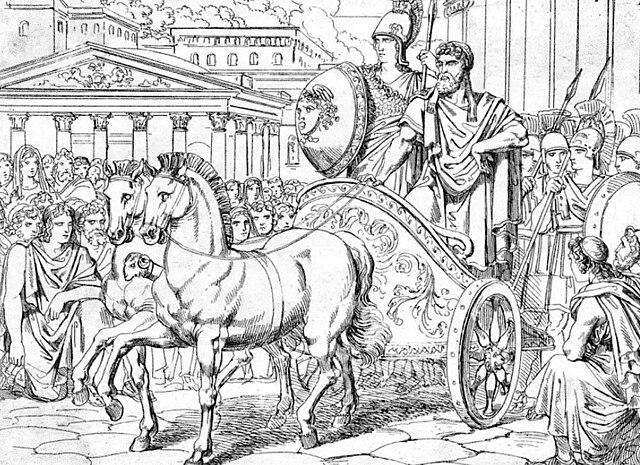Hippias was the last tyrant of Athens, ruling from 527 to 510 BC. He was one of the Peisistratids, a group of three tyrants in Ancient Greece. Pisistratus first, and then his son, Hippias, followed after him by Hippias' illegitimate son, Hegesistratos. He was deposed when Cleomenes I of Sparta successfully invaded Athens and forced him to flee to Persia.
Hippias (tyrant)
Death of the tyrant Hipparchus, by the Syriskos Painter, 475-470 BC
The plain of Marathon
Coinage of Athens at the time of Hippias. Obv: An archaic Gorgoneion. Rev: Square incuse. 545–525 BC
Pisistratus was a politician in ancient Athens, ruling as tyrant in the late 560s, the early 550s and from 546 BC until his death. His unification of Attica, the triangular peninsula of Greece containing Athens, along with economic and cultural improvements laid the groundwork for the later pre-eminence of Athens in ancient Greece. His legacy lies primarily in his institution of the Panathenaic Games, historically assigned the date of 566 BC, and the consequent first attempt at producing a definitive version of the Homeric epics. Pisistratus' championing of the lower class of Athens is an early example of populism. While in power, he did not hesitate to confront the aristocracy and greatly reduce their privileges, confiscating their lands and giving them to the poor. Pisistratus funded many religious and artistic programs, in order to improve the economy and spread the wealth more equally among the Athenian people.
Fictitious depiction of Pisistratus from the 19th century
City of ancient Athens and its surrounding towns. The Long Walls shown were not built until the 5th century BC.
Illustration from 1838 by M. A. Barth depicting the return of Pisistratus to Athens, accompanied by a woman dressed as Athena, as described by the Greek historian Herodotus
Men harvesting olives (ca. 520 BC); British Museum, London








